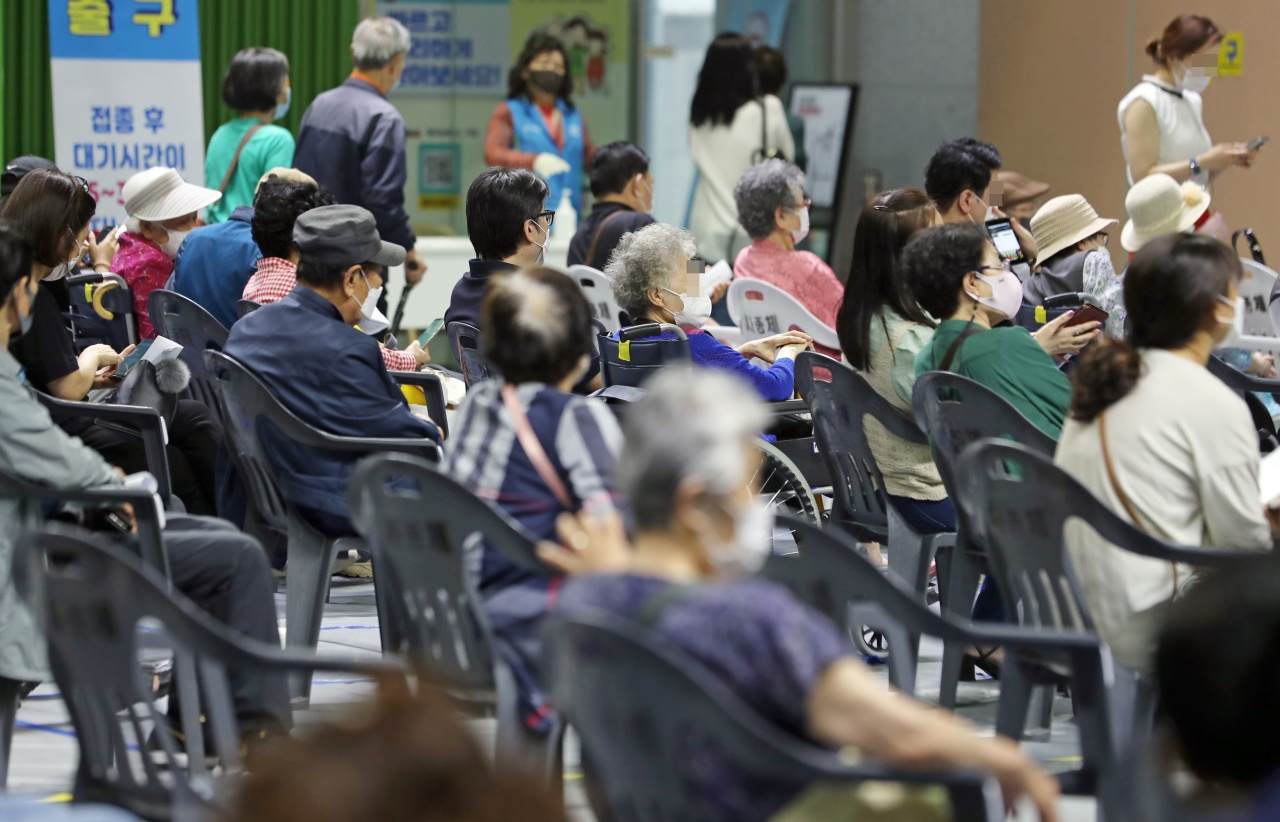 |
People wait at a local vaccination center in southern Seoul on June 11. (Yonhap) |
People aged 50 or older are expected to account for half of the South Korean population in the next decade, government data showed Wednesday.
According to the Ministry of the Interior and Safety’s population statistics, based on the resident registration system as of June 30, people in their 50s accounted for the largest percentage of the total population at 16.6 percent or 8.6 million people. The second-largest group was the 40-somethings, who made up 15.6 percent of the total.
Analyzing population statistics data since 2008, the ministry said the number of people under the age of 40 had decreased by a large margin, whereas the proportion of people aged 50 or over had surged.
The percentage of 60-somethings has shown the largest jump since the government began keeping statistics in 2008. People in their 60s made up 8 percent of the total population in 2008, but accounted for 13.5 percent in the latest figures.
Wednesday’s population data also marked the first time that there were more people in their 60s than in their 20s or 30s. Around 7 million citizens were aged between 60 and 69, while there were 6.7 million people in their 20s and 6.8 million in their 30s.
People in their 30s used to be the second-largest group in 2008 at 17.1 percent of the total, but 30-somethings made up only 13.1 percent of the population in the latest statistics. A similar decline was observed in the proportion of teenagers.
The average age of the country stood at 43.4, an increase of 6.4 years from 37 in 2008. Among the 17 major cities and provinces across the country, the only one with an average age lower than 40 was Sejong, where residents averaged 37.5 years.
The country’s total population was measured at 51,672,400, a decrease of 33,505 from March, showing a continual decline that started last year.
“The statistics show that the asymmetry of population distribution is growing,” said Choi Byung-kwan, an official with the Ministry of the Interior and Safety.
“In 10 years, people in their 50s or older are expected to account for more than half of the total population and many regions are forecast to have an average age of over 50. So we need to speed up in carrying out policies that boost population vitality across the economy and society through education, welfare and local developments.”
By Kan Hyeong-woo (
hwkan@heraldcorp.com)








![[Today’s K-pop] Blackpink’s Jennie, Lisa invited to Coachella as solo acts](http://res.heraldm.com/phpwas/restmb_idxmake.php?idx=644&simg=/content/image/2024/11/21/20241121050099_0.jpg)